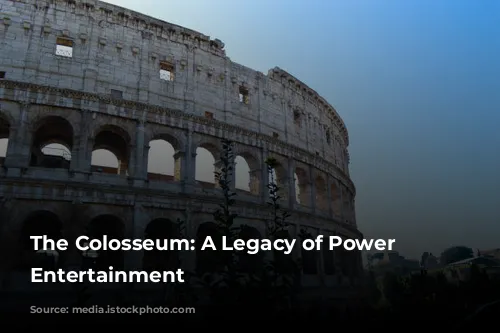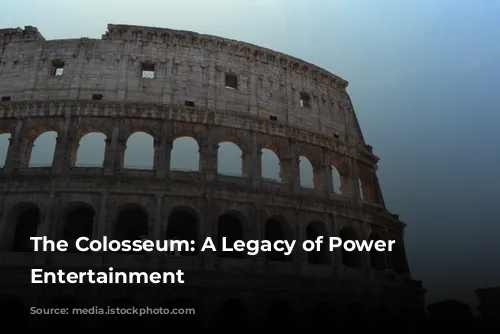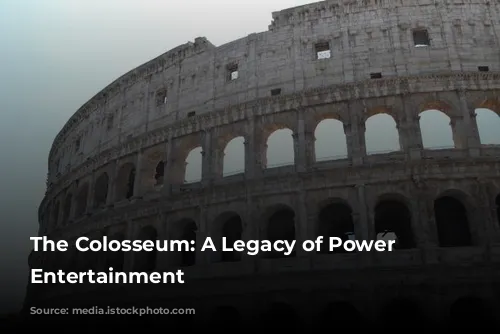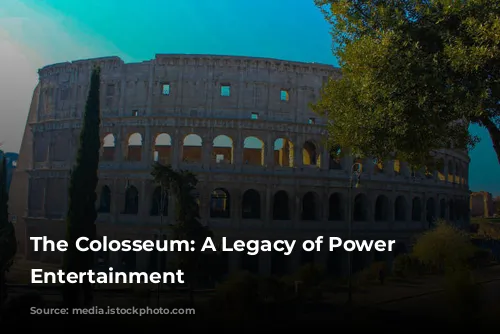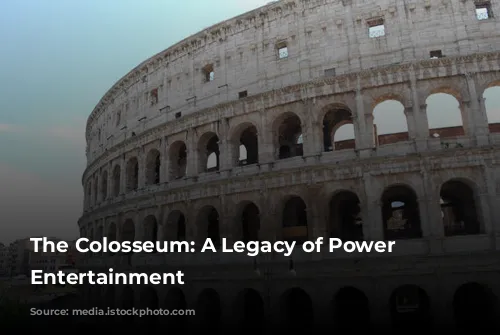The Colosseum, the most iconic landmark in Rome, is a testament to the grandeur and power of the Roman Empire. It stands as a towering monument, a reminder of the spectacles that enthralled audiences for centuries.
A Monument to Roman Might
Originally known as the Flavian Amphitheatre, it was commissioned by Emperor Vespasian, a member of the Flavian family. His son, Titus, inaugurated the massive structure with a lavish opening ceremony that spanned 100 days. The event was a spectacle of gladiatorial combat, wild animal hunts, and even naumachias, elaborate mock sea battles. The historian Suetonius claims that over 5,000 animals were slaughtered during these festivities.
The Colosseum’s Name: A Story of Prophecy and Symbolism
Why is the Colosseum called the Colosseum? It seems that the name originates from a prophecy made by the Venerable Bede, a medieval monk. His words echoed through history: “Rome will exist as long as the Colosseum does; when the Colosseum falls so will Rome; when Rome falls so will the world”. The prophecy could have stemmed from the presence of a colossal statue of Emperor Nero standing beside the amphitheatre. This monumental statue, known as “the Colossus,” stood 35 meters tall, a powerful symbol of Roman might.
A Masterpiece of Roman Engineering
The Colosseum was built using the Romans’ expertise in arch construction. The arch, a vital component of Roman architecture, allowed for the effective distribution of weight, making it possible to construct massive structures like aqueducts. The Colosseum can be viewed as a series of aqueducts built one upon another, a marvel of engineering.
This monumental structure was built in a mere ten years! Its elliptical shape allowed for optimal seating arrangements, enabling the largest possible audience. The Colosseum’s design included four tiers, with the first three boasting 80 arches each. The arches were adorned with grand statues, adding to the building’s visual splendor.
From Arena to Quarry: The Colosseum’s Transformation
Time has not been kind to the Colosseum, and today we see only its skeleton. However, its sheer size and architectural prowess continue to inspire awe. The Colosseum’s outer brick walls, once a magnificent spectacle, have endured centuries of wear and tear. After its days as an arena ended, the Colosseum was transformed into a source of building materials. During the Middle Ages, Popes extracted marble, lead, and iron from its structure, using them to construct other iconic buildings like Barberini Palace, Piazza Venezia, and even St. Peter’s Basilica. The holes left in the columns are a stark reminder of this transformation, revealing the lead and iron used to secure the marble blocks.
A Stage for Entertainment and Power: The Colosseum’s Function
The Colosseum could hold up to 70,000 spectators, offering a spectacular view from every seat. Seating arrangements, similar to today’s theatres, were meticulously designed, reflecting social hierarchy. The common folk occupied the upper tiers, while senators, vestals, priests, and the emperor held the prime seats.
The Colosseum was more than just a place for entertainment. It was a vital tool for propaganda and political control. The public spectacles held within its walls served to remind citizens of the power of the Emperor, while also providing a much-needed distraction from the hardships of daily life.
The Colosseum and Its Spectacles
The arena itself was a stage for a diverse array of shows. The day began with “Venationes”, thrilling contests between exotic animals and even men and animals. The “Silvae”, elaborate set designs with trees, bushes, and a menagerie of animals, were particularly spectacular, showcasing the Romans’ creativity.
The Gladiators: Heroes of the Colosseum
The most popular event at the Colosseum was the gladiatorial combat. The gladiators, who hailed from various backgrounds, were often prisoners of war or paupers seeking fame and fortune. They were skilled fighters, trained in a variety of combat styles, each with their own unique weaponry and armor. The audience, captivated by the gladiators’ bravery, became their devoted fans.
The Colosseum was a brutal stage where gladiators fought for survival and glory. Defeated gladiators could plead for mercy, their fate ultimately decided by the emperor, who held the power of life and death. A thumbs up signified mercy, while a thumbs down meant a gruesome end. Victory was rewarded with riches and fame, with the winning gladiators often enjoying celebrity status.
The blood of gladiators was considered to hold healing powers, a belief reflecting the Romans’ fascination with the occult.
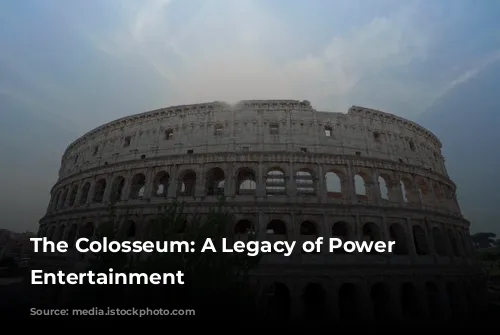
The Colosseum Today: A Legacy of Entertainment and Brutal History
While the Colosseum may not have been used to execute Christians as a spectacle, as some believe, it still serves as a poignant reminder of the brutality and entertainment that characterized the Roman Empire. The Colosseum, once a vibrant arena filled with the roar of the crowd, now stands as a silent monument to the past. It offers a window into the history and culture of ancient Rome, a glimpse into a world that valued spectacle and power.
The Colosseum, a UNESCO World Heritage Site, continues to draw visitors from around the globe. Its ruined walls whisper stories of the past, inviting us to imagine the crowds that once filled its tiers, the gladiators who fought for glory, and the grandeur of a civilization long gone.
